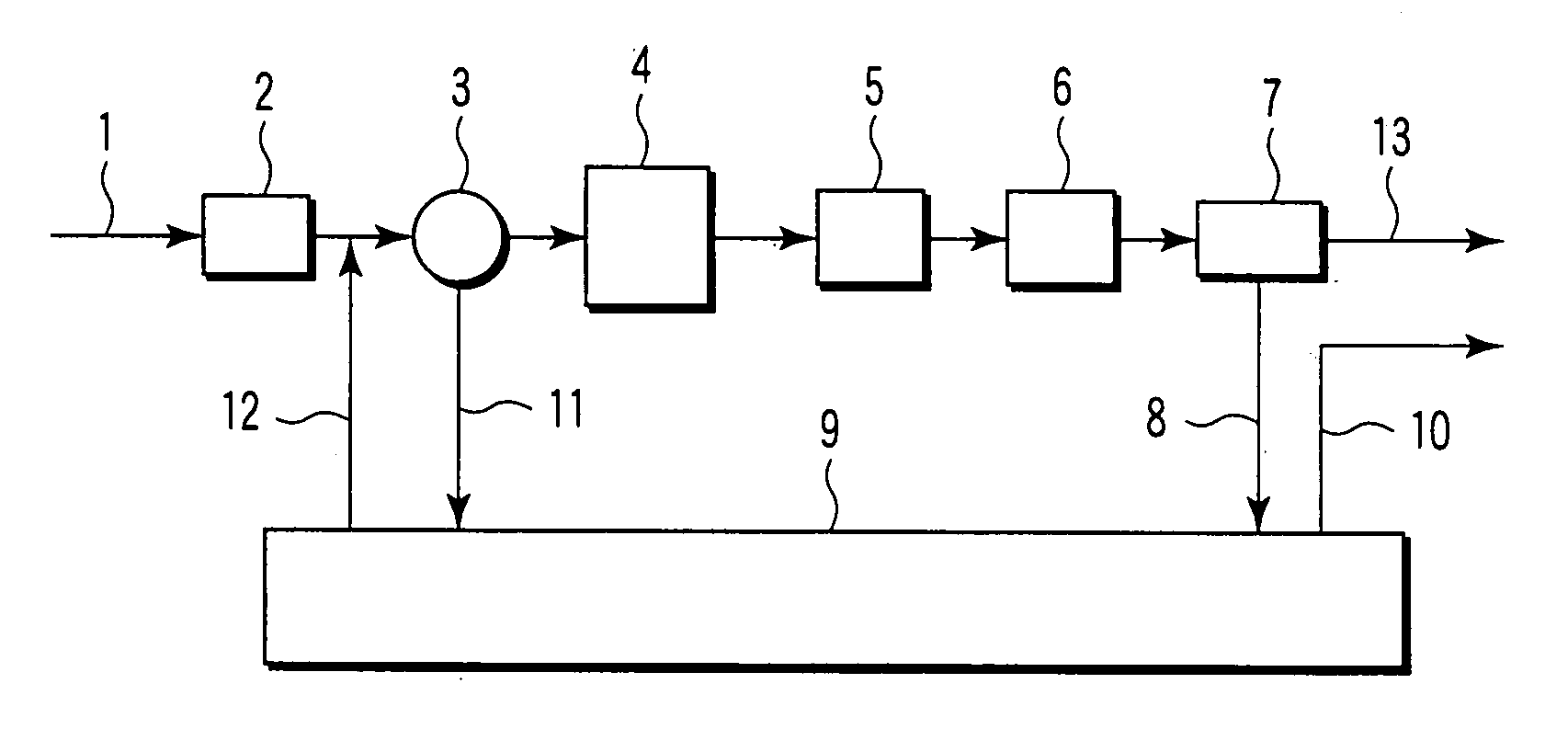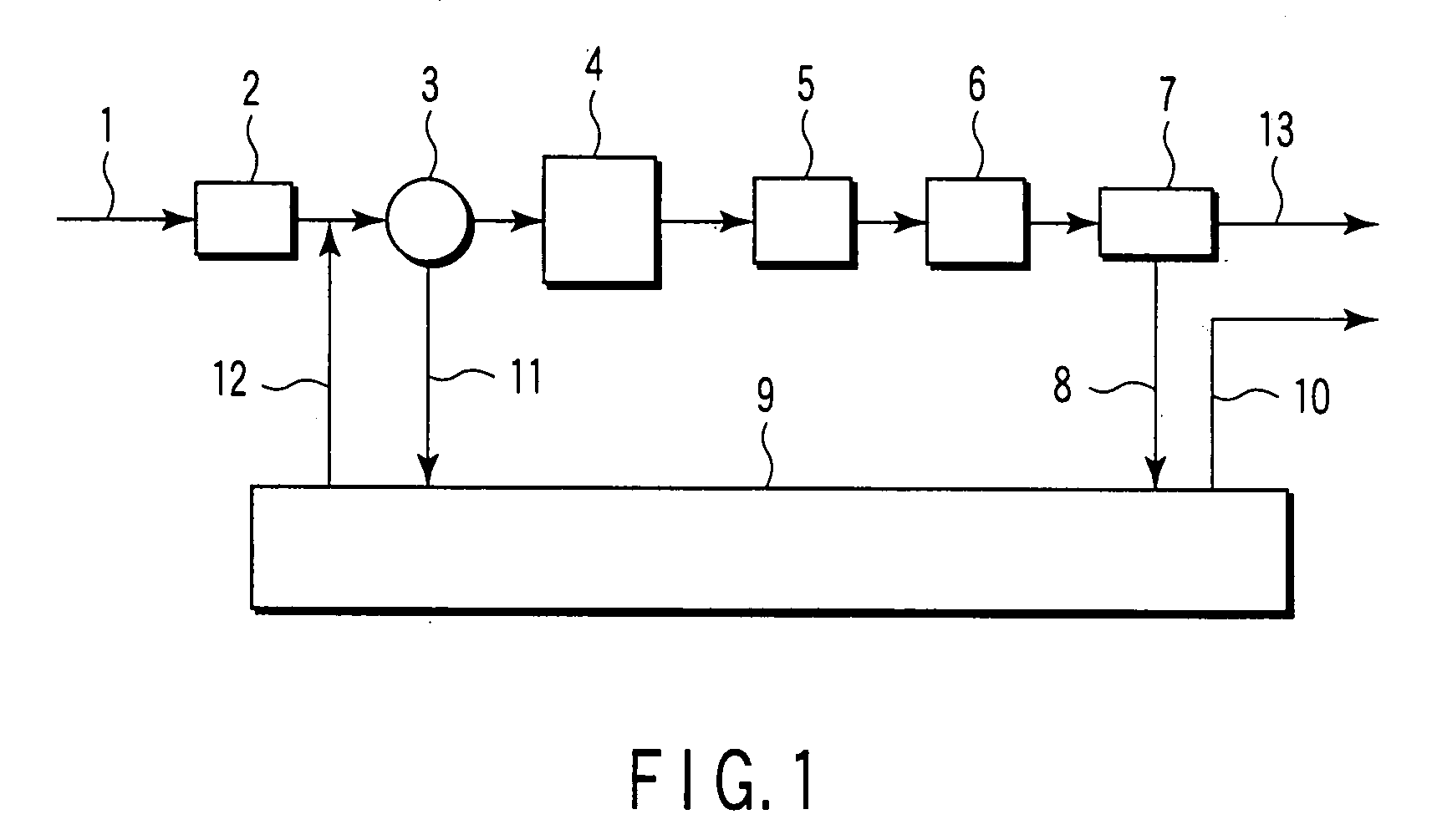Apparatus for treating ballast water and method for treating ballast water
a technology for ballast water and apparatus, which is applied in the direction of water/sewage treatment by substance addition, flow mixer, feed/discharge of settling tanks, etc. it can solve the problem of not meeting the requirements of the international maritime organization (imo), affecting the zooplankton and microorganisms of a relatively large size, and a fear of undesirable influence on the coastal ecosystem. , to achieve the effect of reducing the amount of chlorine bactericide to be supplied
- Summary
- Abstract
- Description
- Claims
- Application Information
AI Technical Summary
Benefits of technology
Problems solved by technology
Method used
Image
Examples
embodiment 1
[0119]Examples of an embodiment of an apparatus for treating ballast water according to the present invention will be explained in detail with reference to the drawings.
[0120]FIG. 1 is a block diagram of an apparatus for treating ballast water according to a first embodiment of the present invention. This apparatus for treating ballast water is provided with the following structure. A sea water intake line 1 introduces sea water into a vessel. A coarse filter 2 removes coarse substances in the sea water introduced from the sea water intake line 1. A pump 3 introduces sea water or feeds ballast water in a ballast tank 9 (which will be explained later) to a filter 4 (which will be explained later). The filter 4 removes plankton existing in the sea water from which coarse substances are removed by the coarse filter 2. A bactericide supply apparatus 5 supplies bactericide to the sea water filtered by the filter 4 to destroy bacteria and plankton. A bactericide-decomposer supply apparatu...
embodiment 2
[0192]FIG. 2 is an explanatory view according to a second embodiment of the present invention. The same symbols are attached to the same parts as those of Embodiment 1. This embodiment differs from Embodiment 1 in the point that sea water is retained after a chlorine bactericide is supplied to the sea water, treatment using hydrogen peroxide is carried out and a second venturi tube is used. Specifically, sea water filtered by a filter is introduced into a first venturi tube after a chlorine bacteria is supplied thereto. The chlorine bactericide is diffused in the sea water by cavitation produced in the venturi tube, leading to an increase in sterilizing effect. Then, the sea water is retained in a holding tank for a prescribed time and then hydrogen peroxide is supplied to the sea water, which is then introduced into a second venturi tube. Hydrogen peroxide is diffused in the sea water by cavitation produced in the second venturi tube.
[0193]In this embodiment, after a chlorine bacte...
embodiment 3
[0224]FIG. 3 is an explanatory view according to a third embodiment of the present invention. The same symbols are attached to the same parts as those of Embodiment 1. This embodiment differs from Embodiment 1 in the point that sea water is retained after a chlorine bactericide is supplied to the sea water, a chlorine reducing agent is supplied, a second venturi tube is used and activated carbon treatment is carried out. Specifically, sea water filtered by a filter is introduced into a first venturi tube after a chlorine bacteria is supplied thereto. The chlorine bactericide is diffused in the sea water by cavitation produced in the first venturi tube. Then, the sea water is retained in the holding tank for the prescribed time and then, a chlorine reducing agent is supplied to the sea water, which is then introduced into a second venturi tube. The chlorine reducing agent is diffused in the sea water by cavitation produced in the second venturi tube. The sea water discharged from the...
PUM
| Property | Measurement | Unit |
|---|---|---|
| Length | aaaaa | aaaaa |
| Length | aaaaa | aaaaa |
| Concentration | aaaaa | aaaaa |
Abstract
Description
Claims
Application Information
 Login to View More
Login to View More - R&D
- Intellectual Property
- Life Sciences
- Materials
- Tech Scout
- Unparalleled Data Quality
- Higher Quality Content
- 60% Fewer Hallucinations
Browse by: Latest US Patents, China's latest patents, Technical Efficacy Thesaurus, Application Domain, Technology Topic, Popular Technical Reports.
© 2025 PatSnap. All rights reserved.Legal|Privacy policy|Modern Slavery Act Transparency Statement|Sitemap|About US| Contact US: help@patsnap.com



